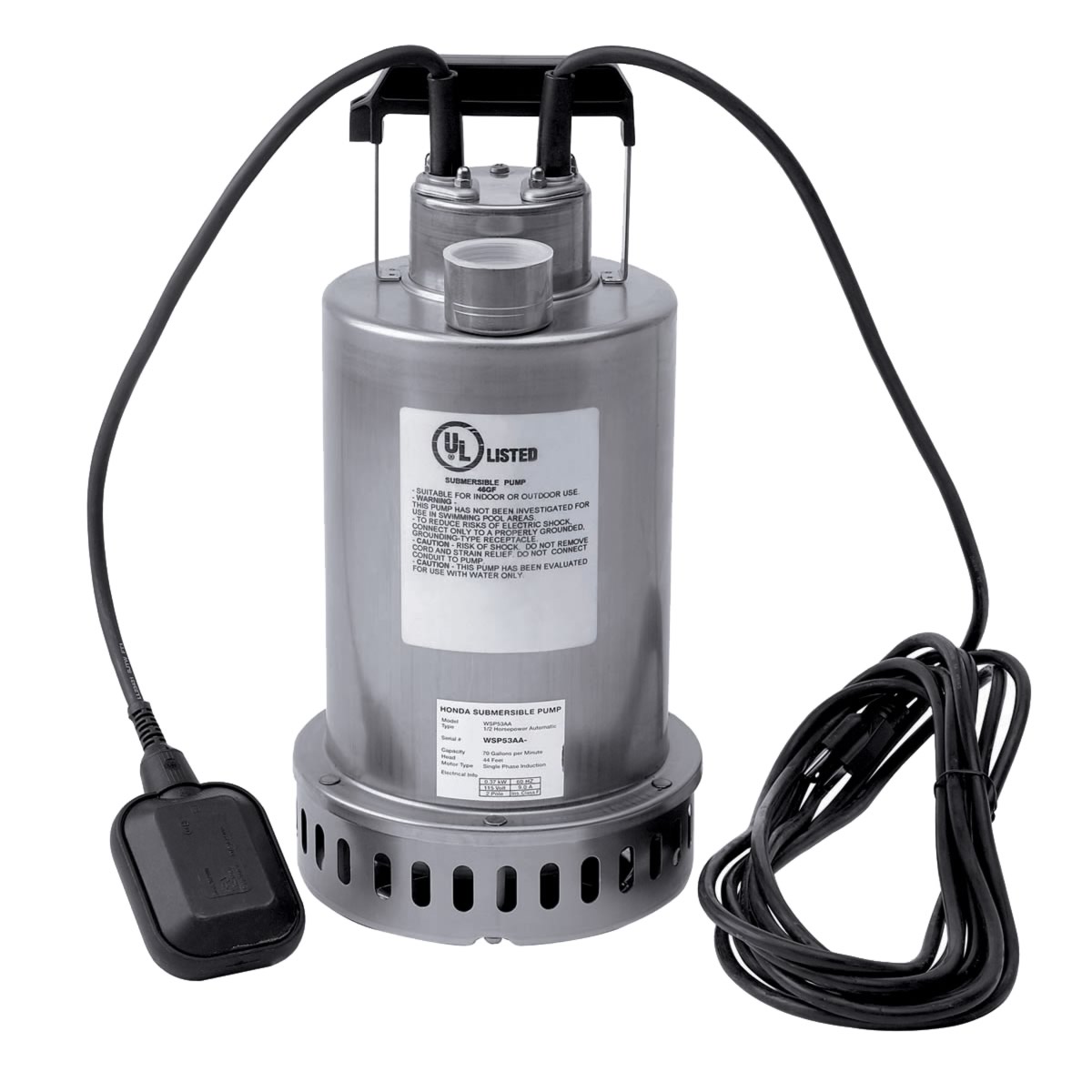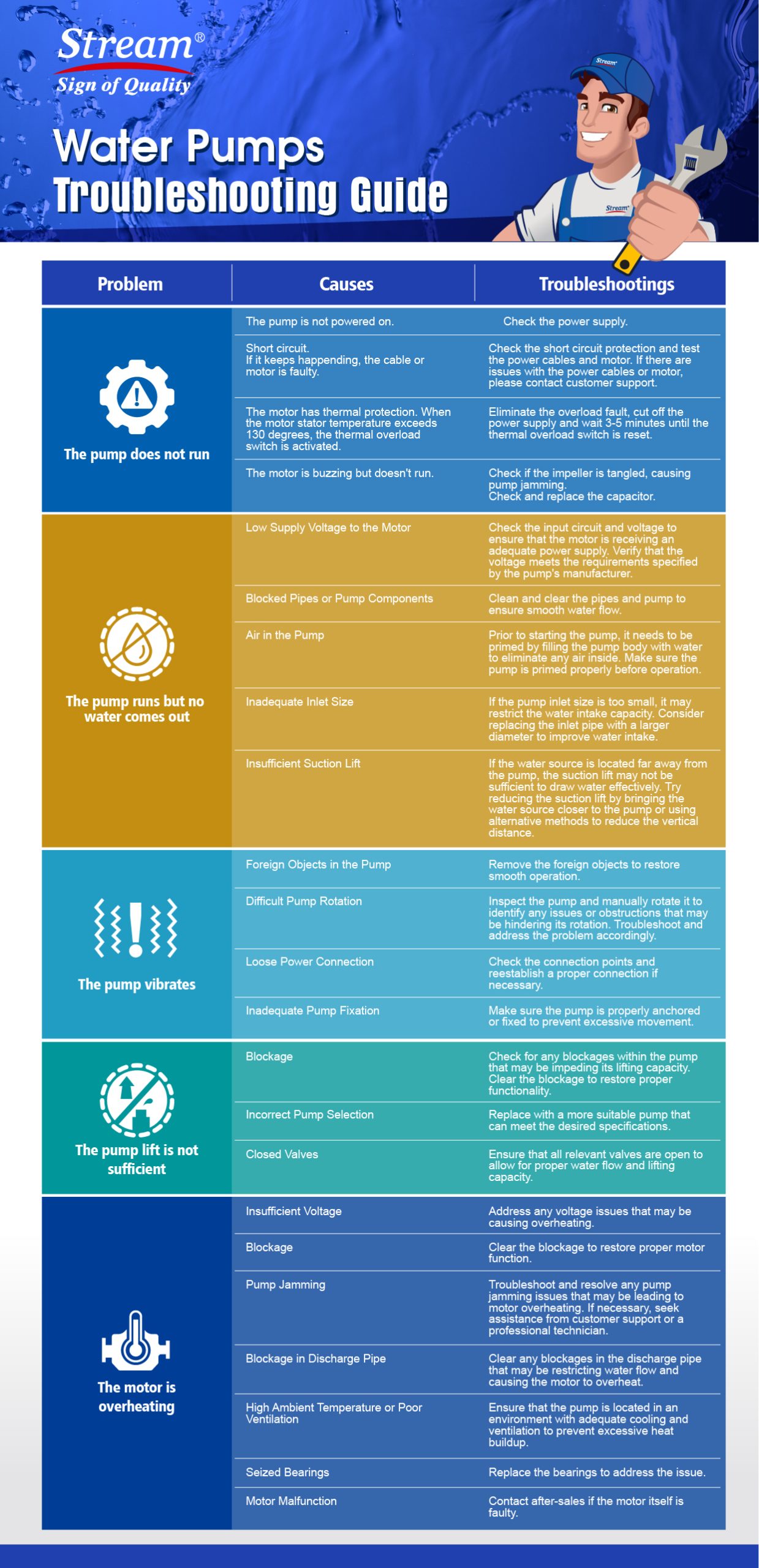Are you facing issues with your submersible pump? Whether it’s not turning on, making strange noises, or struggling to push water, these problems can be frustrating and inconvenient.
You rely on your pump for smooth water flow, and any hiccup can disrupt your daily routine. This troubleshooting guide is designed specifically for you. It will help you identify common problems and provide simple solutions to get your pump back in working order.
By the end of this article, you’ll feel empowered with the knowledge to tackle these issues confidently. Let’s dive in and restore your pump to peak performance!
Common Signs Of Submersible Pump Problems
Common signs of submersible pump problems can save time and money. Look for strange noises. A loud or unusual sound can mean trouble.
Check for vibrations. Excessive shaking can indicate issues inside the pump. Watch for low water flow. This may show a blockage or damage.
Keep an eye on the pump’s power. If it keeps tripping, there may be a short circuit. Look for leaks around the pump. Water outside the pump can signal a problem.
Check for overheating. A hot pump can mean it is working too hard. Regular maintenance helps avoid these issues.
Pump Fails To Start
Check the power supply first. Make sure the pump is plugged in. Look for any tripped circuit breakers or blown fuses. Reset them if needed.
Next, inspect the control panel. Look for any warning lights or error messages. Ensure all settings are correct for the pump. This helps the pump work well.
Finally, examine the wiring and connections. Look for loose or damaged wires. Tighten any loose connections. Replace any damaged wires to ensure power flows properly.
Low Water Pressure Issues
Low water pressure can be frustrating. It can happen for many reasons. One common cause is a clogged pump intake. Dirt and debris can block the intake. Clean it to restore flow.
Impeller damageis another issue. The impeller helps move water. If it is broken, water cannot flow well. Check the impeller for cracks or wear.
Water level concerns also affect pressure. If the water level is too low, the pump may not work. Ensure the water source is full. This is important for good pressure.

Pump Runs Continuously
Check the float switch first. A faulty float switch can cause the pump to run all the time. Make sure it moves freely. Clean any dirt or debris around it.
Next, look for leaks in the system. Leaking pipes or connections can lead to constant running. Check all joints and seals. Tighten or replace any damaged parts.
Consider the pump size as well. An incorrectly sized pump can run non-stop. Ensure your pump fits the needs of your system. A pump too small may struggle, while a big one may run too much.
Unusual Noises From The Pump
Unusual noises from the pump may signal problems. Debris in the pump can block parts. This makes noise and reduces efficiency. Check the pump for any objects. Clean it to fix the sound.
Worn bearings or seals can also cause noise. If the bearings are old, they might grind. This leads to loud sounds. Inspect the bearings and seals regularly. Replace them if they look damaged.
Cavitation problems create a loud banging noise. This happens when there is low pressure in the pump. Check the pressure levels. Fix any issues with the intake or pipes.
Overheating And Shutdown
Blocked cooling paths can cause overheating. Check for dirt and debris. Clean the cooling vents regularly.
Motor overload can happen for several reasons. Too much weight on the pump is one. Make sure the pump is not lifting more than it should.
Insufficient ventilation leads to heat build-up. Ensure there is enough air around the pump. Keep nearby areas clear of obstructions.
Pump Produces Dirty Water
Dirty water can mean trouble for your pump. Look for a damaged casing first. A cracked or broken casing allows dirt to enter. This makes the water dirty.
Next, check for sediment build-up. Over time, dirt and debris can gather inside the pump. This can cause the water to appear murky. Cleaning the pump helps to fix this issue.
Lastly, inspect the faulty seals. Worn or damaged seals can let dirt inside. Replacing these seals often improves water quality. A simple check can save you a lot of trouble.

Periodic Maintenance Tips
Regular cleaning and flushing keep your submersible pump running well. Remove dirt and debris from the pump. This helps prevent clogs. Always check the filter for any blockages. A clean filter improves flow and efficiency.
Inspect all key components. Look for cracks or wear. Check the impeller for damage. Ensure the motor runs smoothly. Pay attention to any strange noises. These signs can mean trouble.
Replacing worn parts is crucial. Over time, parts like seals and bearings wear out. Replace them to avoid bigger problems. Always use parts that fit correctly. This ensures your pump works like new.
When To Call A Professional
Call a professional for persistent issues. If the pump keeps failing, help is needed. Strange noises or vibrations are signs too. These problems may not fix themselves.
Major repairs may also need a pro. If parts are broken, a professional can help. They know how to replace parts safely. This will save time and trouble.
Warranty considerations are important. Check if the pump is still under warranty. Calling a pro could void the warranty. Always read the warranty details first.

Frequently Asked Questions
What Are Common Submersible Pump Issues?
Common issues include loss of power, overheating, and reduced flow. Clogs in the pump or discharge line can also occur. Additionally, improper installation can lead to malfunction. Regular maintenance and inspections can help identify these problems early. Addressing these issues promptly ensures optimal pump performance.
How Do I Troubleshoot A Submersible Pump?
Start by checking the power supply and connections. Ensure the pump is properly submerged and not clogged. Inspect the circuit breaker for tripped switches. Use a multimeter to test electrical components. If problems persist, consult the manufacturer’s manual or seek professional assistance for complex issues.
Why Is My Submersible Pump Making Noise?
Unusual noises may indicate mechanical problems or cavitation. Check for debris in the impeller or a loose motor. Air bubbles or low water levels can also cause noise. Persistent sounds should not be ignored, as they can signal serious issues.
Regular maintenance can prevent these problems from developing.
How Can I Improve My Pump’s Efficiency?
Ensure proper installation and alignment of the pump. Regularly clean filters and check for clogs. Monitor the pump’s operating conditions, including depth and flow rate. Upgrading to a variable speed drive can enhance efficiency. Consistent maintenance helps prolong the pump’s lifespan and performance.
Conclusion
Troubleshooting your submersible pump can save you time and money. By following this guide, you can identify common issues easily. Regular maintenance keeps your pump running well. Always check for clogs, leaks, or electrical problems. Knowing the signs of trouble helps you act quickly.
Don’t hesitate to reach out for professional help if needed. Keeping your pump in good shape ensures reliable performance. With a little effort, you can extend its life and efficiency. Stay proactive, and your pump will serve you well for years.
Read More:
- Best Home Water Filtration Units: Top Picks for Clean Water
- Diy Hydroponic Grow System Guide: Cultivate Success
- Mini Hydro System Feasibility Study: Unlocking Eco Solutions
- Chemical Dosing Pump Pricing Guide: Maximize Your Investment
- Diaphragm Pump Cost Comparison: Affordable Options Unveiled
- Hydroelectric Dam Maintenance Cost Analysis: Cutting Costs
- Commercial Water Filtration System Cost: Save Money Today
- Diaphragm Pump Maintenance Tips: Ensure Peak Performance
